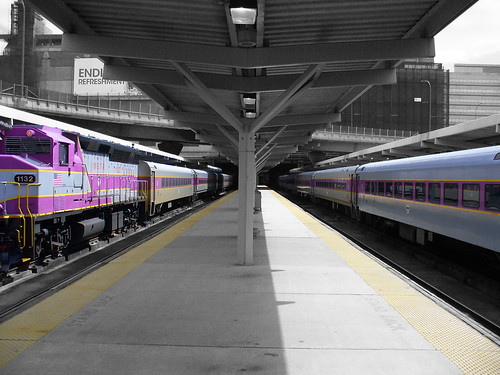MBTA Struggles with Commuter Rail Ridership Count
Accurate ridership calculations are critical for public transportation planning as they are a key factor in prioritizing projects. MBTA ridership statistics help determine the optimal allocation of capital among lines and trains as well as projecting capacity requirements for station platforms, waiting areas, and parking facilities.
Further, ridership patterns on existing lines can be used to predict probable patterns on proposed service extensions. The commuter rail falls far short in obtaining sufficient ridership data needed for highly calibrated project planning.
Unlike subway and bus services that are operated directly by the MBTA, the commuter rail system lacks the faregates or fareboxes that, under ideal circumstances, can count passengers. The conductors on each commuter rail train must collect fares and inspect passes, but they do not record each transaction. While monthly ticket and pass sales figures can be used to estimate ridership, they do not show the distribution of trips by day or by station. Conductors are required to file headcount reports showing the total number of passengers on each trip each day, but these are usually rough estimates rather than actual counts and are inconsistent with ridership calculated by other means.
A few times a year, Keolis, which operates the commuter rail for the MBTA, prepares more detailed ridership reports, called Train Audits. The goal of the audits is to show the number of riders by type of fare payment boarding each inbound train at each station on one weekday, one Saturday, and one Sunday. To collect data for the Train Audits, the conductor on each inbound train is supposed to turn in a report showing the number of riders boarding the train at every station, as well as the type of fare paid by each boarding passenger. However, it is not realistically possible for conductors to record all this information in addition to their usual responsibilities of collecting tickets and monitoring doors at stops. Therefore, it is widely accepted that the daily ridership estimated by the conductor is lower than the total indicated by Train Audit reports.
Further, decisions about major investments in upgrading station facilities require ridership statistics from several different days to determine the typical amount of day-to-day and seasonal variation, and variation due to extreme weather conditions or major events in Boston. This is one of the reasons that the MBTA’s Automated Fare Collection 2.0 plan is so desperately needed. Once implemented, riders will be able to tap their Charlie Card not only for the subway, but all MBTA transportation modes, including commuter rail. Conductors will no longer have to estimate ridership as it will be calculated automatically. A solution is critical as, according to MBTAAnalysis.com, ridership across MBTA modes of transportation increased between 2008-2012 and 2013-2017. The MBTA needs to accurately assess the increase to properly prioritize upcoming projects.
Despite the MBTA delaying the implementation of the new fare collection plan, Keolis has stated that they are on track to implement the Automated Fare Collection 2.0 plan by 2020 on the commuter rail. Given that Keolis executives actually admitted there are no accurate means of estimating ridership in meetings with Pioneer Institute, the implementation of the new system is absolutely imperative.
Harris Foulkes is a Roger Perry Transparency Intern at Pioneer Institute and a rising sophomore at Amherst College studying Economics.



